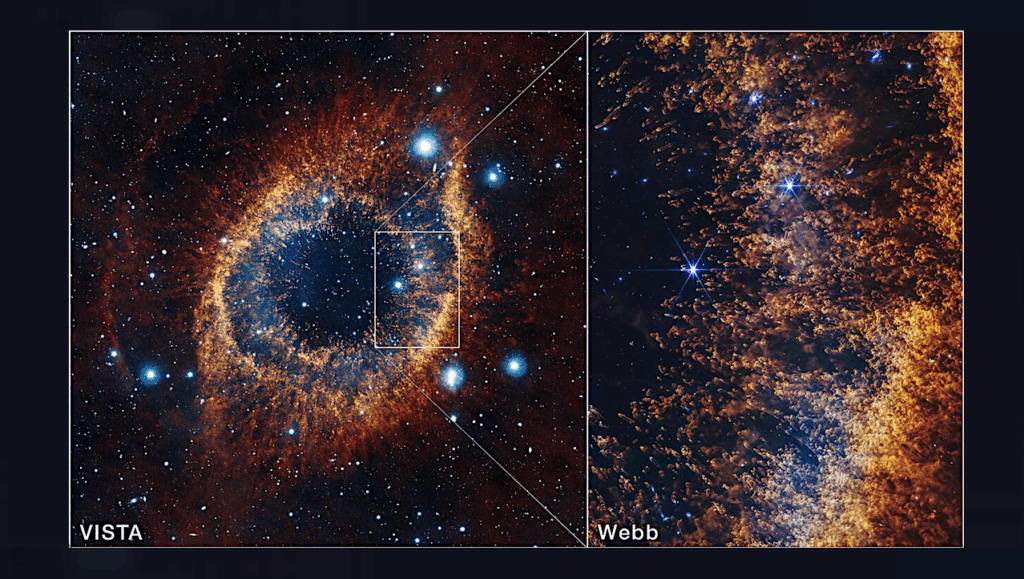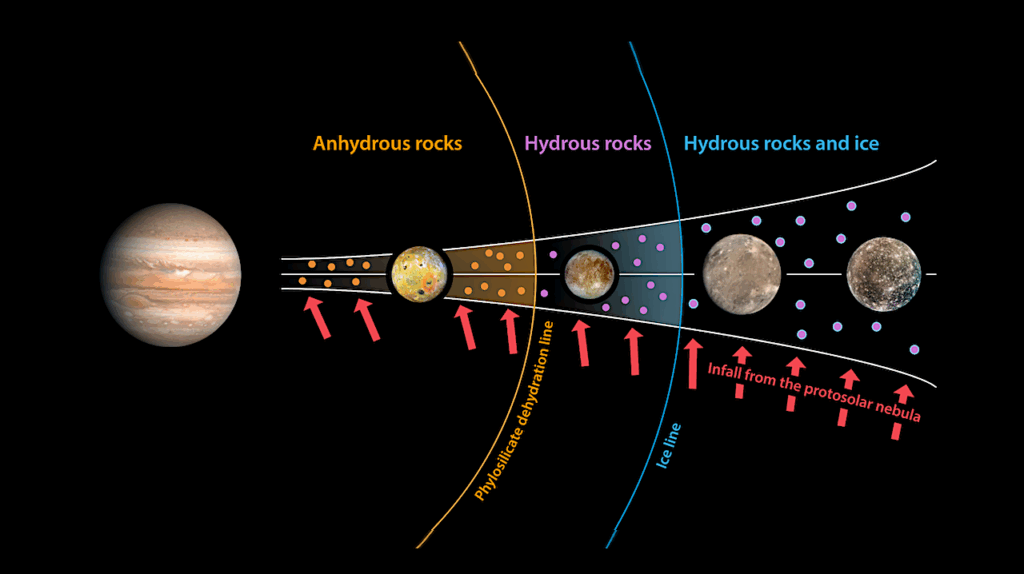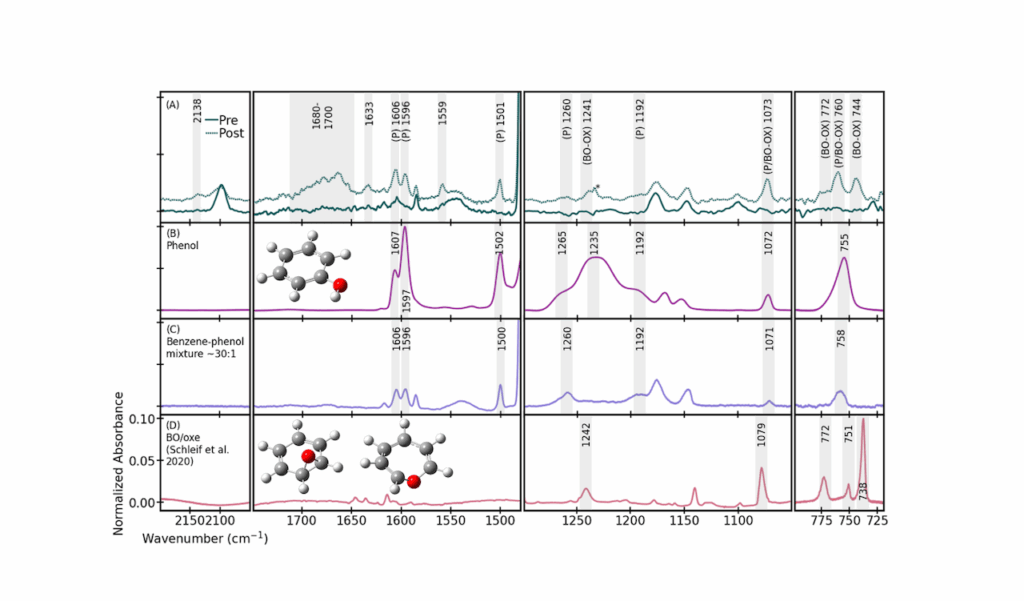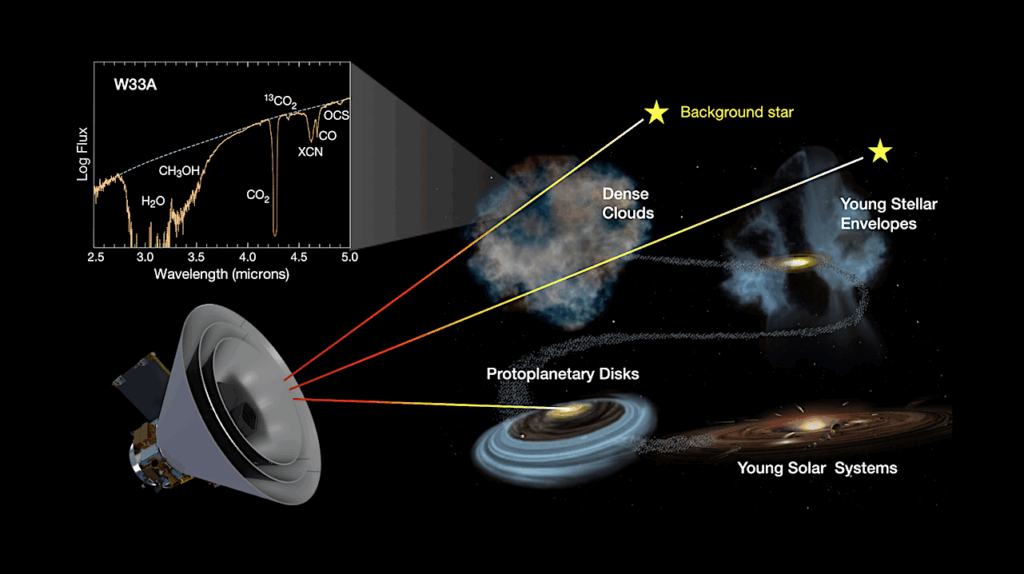CoCCoA: Complex Chemistry In Hot Cores With ALMA. Selected Oxygen-bearing Species
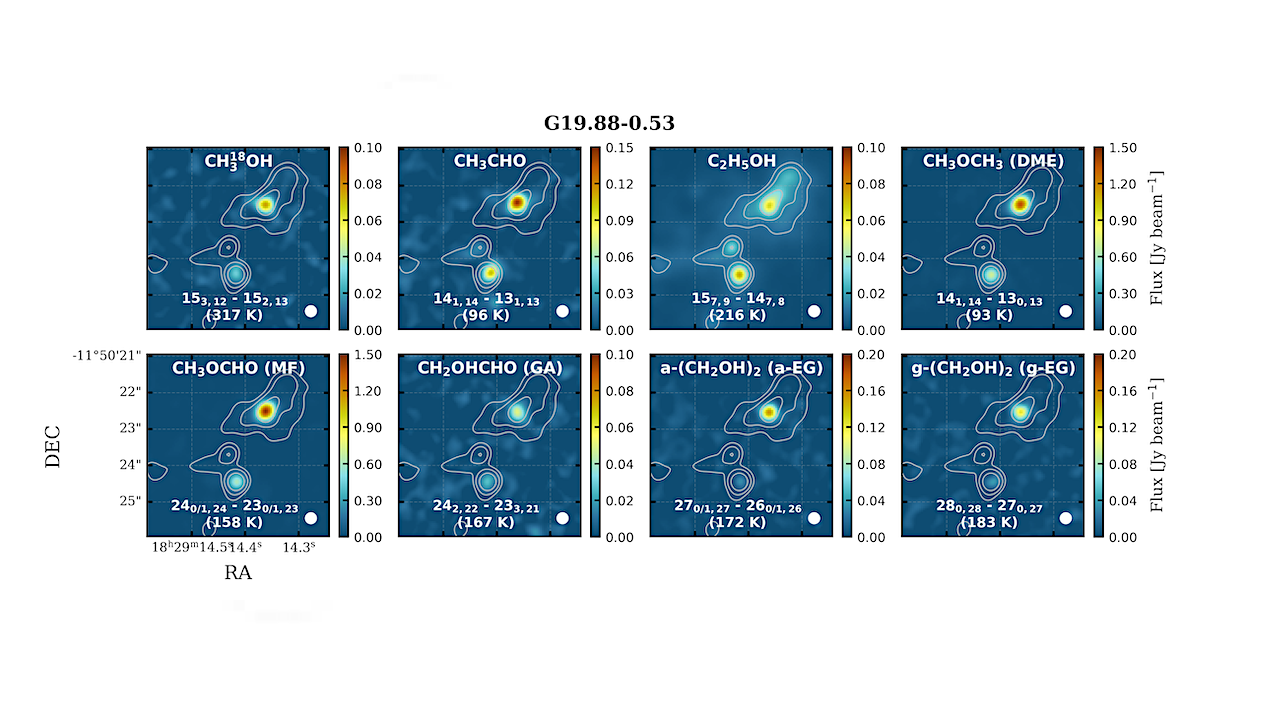
Complex organic molecules (COMs) have been observed to be abundant in the gas phase toward protostars. Deep line surveys have been carried out only for a limited number of well-known high-mass star forming regions using the Atacama Large Millimeter/submillimeter Array (ALMA), which has unprecedented resolution and sensitivity.
Statistical studies on oxygen-bearing COMs (O-COMs) in high-mass protostars using ALMA are still lacking. With the recent CoCCoA survey, we are able to determine the column density ratios of six O-COMs with respect to methanol (CH3OH) in a sample of 14 high-mass protostellar sources to investigate their origin through ice and/or gas-phase chemistry.
The selected species are: acetaldehyde (CH3CHO), ethanol (C2H5OH), dimethyl ether (DME, CH3OCH3), methyl formate (MF, CH3OCHO), glycolaldehyde (GA, CH2OHCHO), and ethylene glycol (EG, (CH2OH)2). DME and MF have the highest and most constant ratios within one order of magnitude, while the other four species have lower ratios and exhibit larger scatter by 1-2 orders of magnitude. We compare the O-COM ratios of high-mass CoCCoA sources with those of 5 low-mass protostars available from the literature, along with the results from experiments and simulations.
We find that the O-COM ratios with respect to methanol are on the same level in both the high- and low-mass samples, which suggests that these species are mainly formed in similar environments during star formation, probably in ice mantles on dust grains during early pre-stellar stages. Current simulations and experiments can reproduce most observational trends with a few exceptions, and hypotheses exist to explain the differences between observations and simulations/experiments, such as the involvement of gas-phase chemistry and different emitting areas of molecules.
Y. Chen, M. L. van Gelder, P. Nazari, C. L. Brogan, E. F. van Dishoeck, H. Linnartz, J. K. Jørgensen, T. R. Hunter, O. H. Wilkins, G. A. Blake, P. Caselli, K.-J. Chuang, C. Codella, I. Cooke, M. N. Drozdovskaya, R. T. Garrod, S. Ioppolo, M. Jin, B. M. Kulterer, N. F. W. Ligterink, A. Lipnicky, R. Loomis, M. G. Rachid, S. Spezzano, B. A. McGuire
Comments: Accepted for publication in Astronomy & Astrophysics. 17 pages and 7 figures in the main body, 15 pages and 8 figures in the appendix
Subjects: Astrophysics of Galaxies (astro-ph.GA)
Cite as: arXiv:2308.02688 [astro-ph.GA] (or arXiv:2308.02688v1 [astro-ph.GA] for this version)
Submission history
From: Yuan Chen
[v1] Fri, 4 Aug 2023 19:56:48 UTC (13,996 KB)
https://arxiv.org/abs/2308.02688
Astrobiology, Astrochemistry


